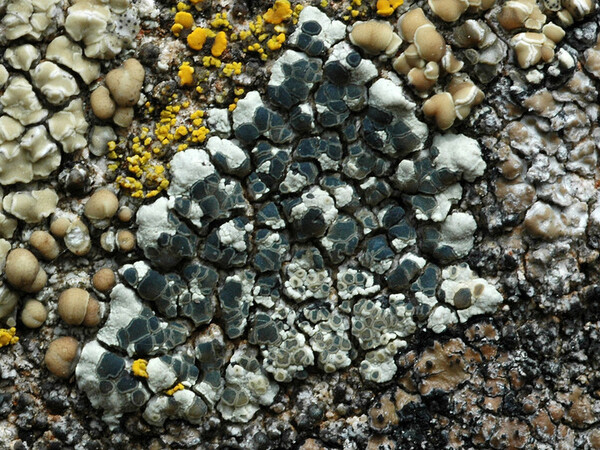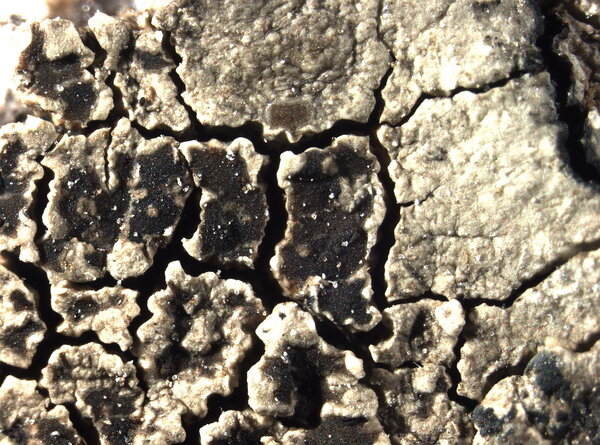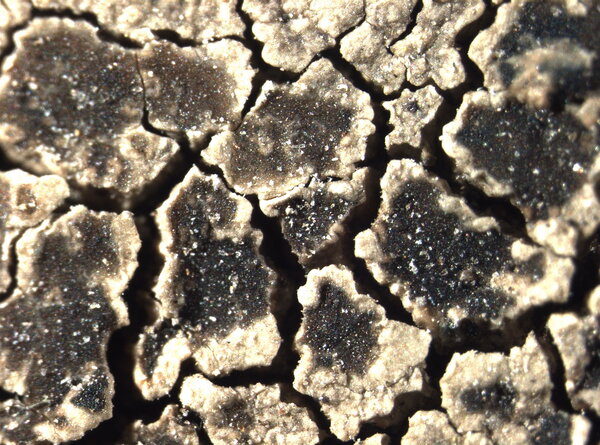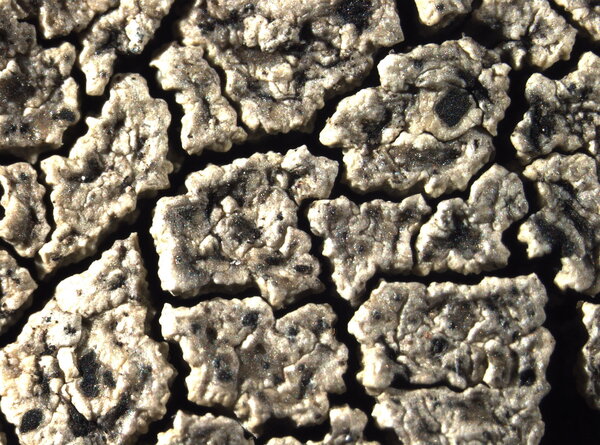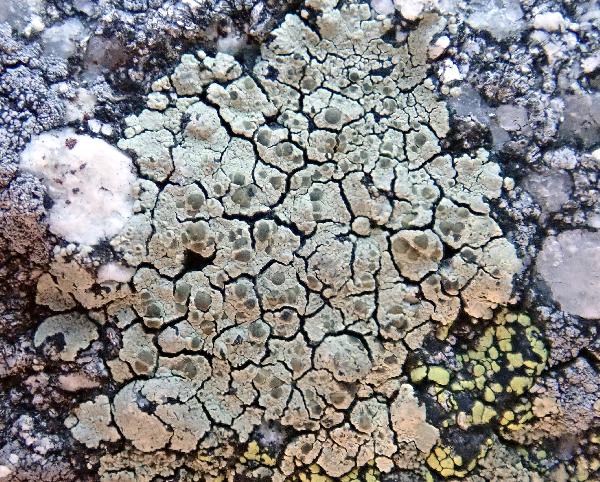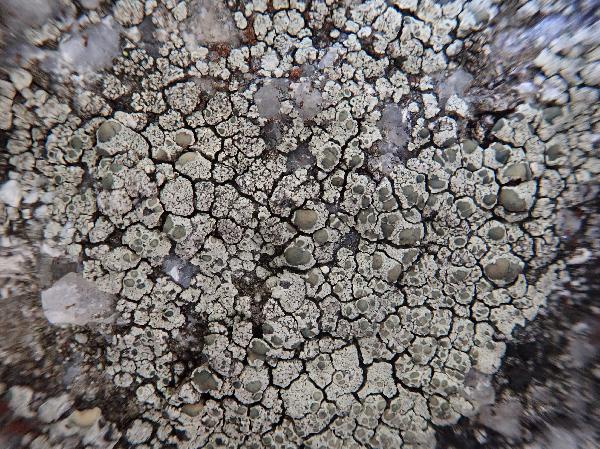Lecanora intricata (Ach.) Ach.
Lichenogr. Univ.: 380, 1810. Basionym: Parmelia intricata Ach. - Meth. Lich.: 178, 1803.
Synonyms: Biatora polytropa var. intricata (Ach.) Th. Fr.; Lecanora intricata f. coerulea Lamy; Lecanora polytropa var. intricata (Ach.) Rabenh.
Distribution: N - Frl (Tretiach & Hafellner 2000), Ven (Caniglia & al. 1999), TAA (Caniglia & al. 2002, Nascimbene 2003, Lang 2009, Nascimbene & al. 2022), Lomb, Piem (Isocrono & al. 2004, Isocrono & Piervittori 2008, Favero-Longo & al. 2015), VA (Piervittori & Isocrono 1999), Emil (Dalle Vedove & al. 2002, Tretiach & al. 2008), Emil (Fariselli & al. 2020), Lig. C - Tosc (Tretiach & al. 2008), Sar (Nöske 2000).
Description: Thallus crustose, episubstratic, rimose-areolate, rather thick, yellowish green to grey green, sometimes delimited by a dark prothallus, the areoles 0.2-0.6 mm wide, flattened, contiguous or scattered, often with a crenulate margin, smooth or finely wrinkled, epruinose. Cortex with abundant dead algal cells, the upper part with coarse hyaline granules which are insoluble in K; medulla white, dense. Apothecia lecanorine to almost biatorine, crowded, (0.4-)0.6-1(-1.2) mm across, at first immersed, then subsessile, not constricted at base, 1-2(-3) per areole, with a slightly concave to convex, greenish brown to blackish green, epruinose disc and a prominent to finally excluded thalline margin. Thalline exciple corticate, the cortex with dark brown granules soluble in K; algal layer dense, extending below the hypothecium; medullary part lacking crystals; proper exciple colourless, without crystals; epithecium green-brown or brown, c. 10 µm high, with numerous small crystals visible under polarized light, which are soluble in K, N+ purple; hymenium colourless, 60-70 µm high; paraphyses simple or sparingly branched in upper part, the apical cells slightly swollen, up to 2.5 µm wide; hypothecium colourless. Asci 8-spored, clavate, very thin-walled, with a K/I+ blue, tall tholus penetrated by a faintly amyloid apical cushion, the wall K/I-, surrounded by a blue outer layer, Lecanora-type. Ascospores 1-celled, hyaline, oblong or oblong ellipsoid, (8-)9-13(-15) x 4.5-7 µm. Pycnidia dark, immersed. Conidia thread-like, curved, 23-25 x 0.5-1 µm. Photobiont chlorococcoid. Spot tests: thallus K- or K+ faintly yellow, C-, KC+ yellow, P-, UV+ dull orange; medulla KC-. Chemistry: usnic acid and zeorin. Note: a circumpolar, arctic-alpine, ecologically wide-ranging silicicolous species, common in the Alps, much rarer in the mountains of Southern Italy, with optimum above treeline, reaching the nival belt in the Alps.
Growth form: Crustose
Substrata: rocks
Photobiont: green algae other than Trentepohlia
Reproductive strategy: mainly sexual
Commonnes-rarity: (info)
Alpine belt: very common
Subalpine belt: common
Oromediterranean belt: rare
Montane belt: rather rare
Submediterranean belt: absent
Padanian area: absent
Humid submediterranean belt: absent
Humid mediterranean belt: absent
Dry mediterranean belt: absent

Predictive model
Herbarium samples
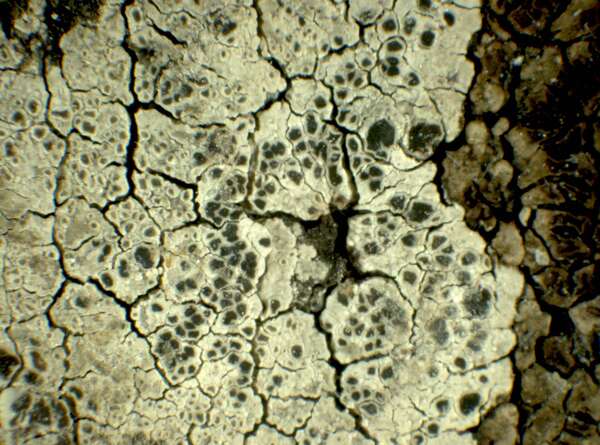

P.L. Nimis; Owner: Department of Life Sciences, University of Trieste
Herbarium: TSB (25126)
2001/12/08
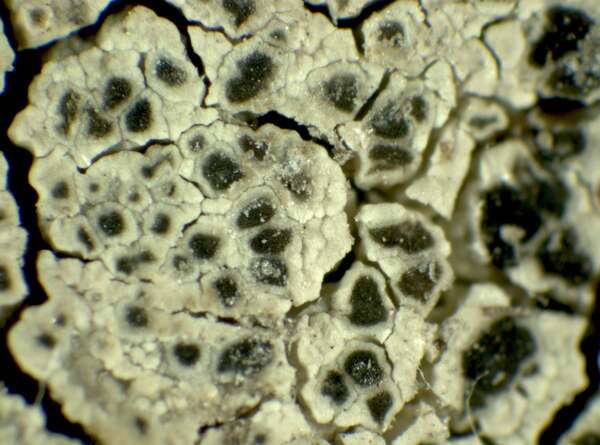

P.L. Nimis; Owner: Department of Life Sciences, University of Trieste
Herbarium: TSB (25126)
2001/12/08

Walter Obermayer CC BY-SA 4.0 - Source: Lichens of Noricum - http://lichens-of-noricum.uni-graz.at/
Austria, Zirbitz
2021
together with L. polytropa

Courtesy Danièle et Olivier Gonnet - Source: https://www.afl-lichenologie.fr/Photos_AFL/Photos_AFL_L/Lecanora_intricata.htm
France, Session AFL Lozère - 2005
Growth form: Crustose
Substrata: rocks
Photobiont: green algae other than Trentepohlia
Reproductive strategy: mainly sexual
Commonnes-rarity: (info)
Alpine belt: very common
Subalpine belt: common
Oromediterranean belt: rare
Montane belt: rather rare
Submediterranean belt: absent
Padanian area: absent
Humid submediterranean belt: absent
Humid mediterranean belt: absent
Dry mediterranean belt: absent

Predictive model
| Herbarium samples |


P.L. Nimis; Owner: Department of Life Sciences, University of Trieste
Herbarium: TSB (25126)
2001/12/08


P.L. Nimis; Owner: Department of Life Sciences, University of Trieste
Herbarium: TSB (25126)
2001/12/08

Walter Obermayer CC BY-SA 4.0 - Source: Lichens of Noricum - http://lichens-of-noricum.uni-graz.at/
Austria, Zirbitz
2021
together with L. polytropa

 INDEX FUNGORUM
INDEX FUNGORUM
 GBIF
GBIF
 DOLICHENS
DOLICHENS
